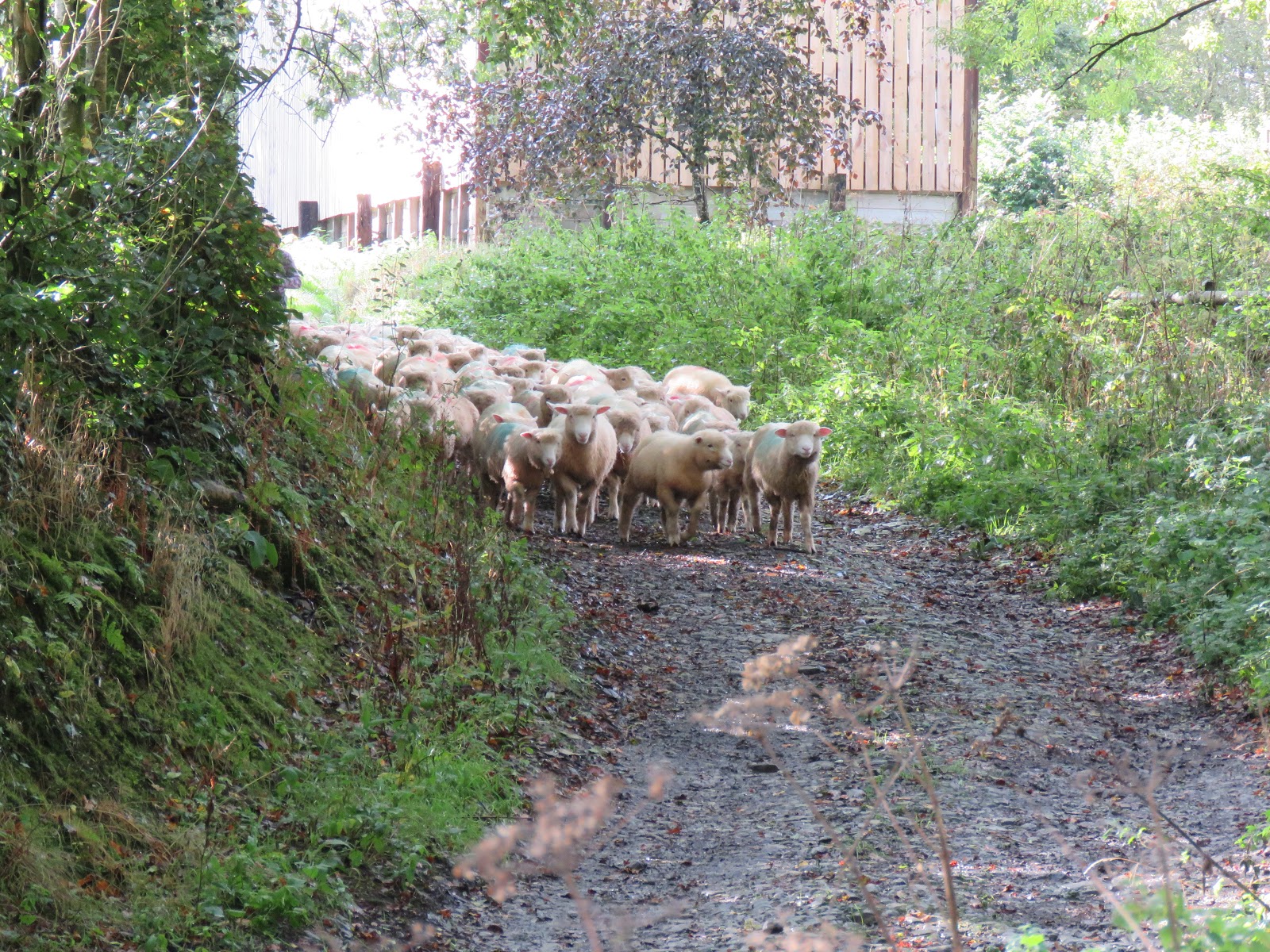 |
| Beautiful tomatoes we picked every few days. |
Fascinating Fact of the Day about Devon: From this site:
 |
| The Dorset sheep on the farm are adorable, although dirty from the constant rain. |
While in Wales, I plan to go through the supply bag and my clothing bag to clear out anything we don’t need and any clothing that has to go due to wear and tear.
 |
| All the lambs are being moved from one paddock to another. |
At times, I could toss the whole lot when I am sick of looking at the same things over and over again. But, until we get to the US, where we’ll each rebuild our wardrobe, we’ll do the best we can. We prefer to buy clothing in Minnesota when there’s no sales tax on apparel.
 |
| Tom, the shepherd, enjoyed taking part in herding the sheep. |
The only time weight is an issue when we fly from Fort Lauderdale to Minnesota and then several more flights in the US for two months, moving from state to state to visit family.
 |
| This is my favorite photo. |
 |
| The pristine beach at Torquay. |
One of the four properties we rented over two months in the UK that we were a little concerned about was too small. It has only one bedroom leaving few options to open our bags and not officially unpack. We’ll only be there for 11 nights, but as always, we’ll figure it out.
 |
| An impressive design made by a skilled sand sculptor. |
On Monday, we’ll see our friends, Linda and Ken, who are staying nearby for four nights and I’m certain we’ll spend a lot of time with them. If we’d known they were coming ahead of time, we’d have booked a bigger property enabling them to stay with us.
 |
| We explored parts of the massive apple orchard. |
They stayed with us for a week in Marloth Park, and it was as easy as it could be. They were fantastic houseguests who pitched in and helped with meals, cleanup, and picking up after themselves.
 |
| Even the chickens were entertaining. |
While in Wales, they’ve selected a holiday home not too far away so we can all spend time together. No doubt, this will be a busy and fun four days. If the weather improves a little surely, we’ll go sightseeing together.
 |
| The pond at Pond Cottage where the ducks carried on all day. |
Linda and Ken are avid world travelers, currently coming off a trip on the Orient Express, and we can’t wait to hear all about it. It is very similar to our upcoming train adventure in India on the Maharajas Express at the beginning of February. We’re anxious to hear the ins and outs of traveling overnight by train, a first for both of us.
 |
| With the cool weather, we had a fire in the wood-burning stove almost every day and evening. Tom gathered the neatly arranged dry firewood from the shed every few days. |
Most likely, we’ll dine out while they’re visiting, but I noticed our new holiday home in Chepstow has a dining table for four. Most likely, we’ll cook a night or two.
 |
| The chicken was looking inside the house to see if we had any pellets. |
Well, folks, we’re signing off from the fabulous farm in Witheridge and will be back tomorrow with photos of our new location.
 |
| One day’s picking in the garden. |
Have a purposeful and yet peaceful day! See you soon!
 |
| Ms. Warthog’s poses for the camera. For more photos, please click here. |































































































